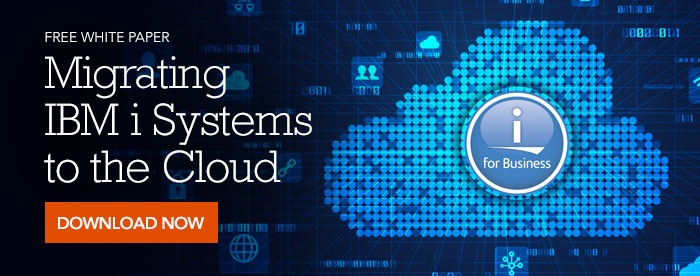Today’s cloud solutions for IBM Power are better protected than most on-premise systems, but that doesn’t mean there is no risk associated with the migration process. Like any move, it requires proper planning to avoid unexpected and unwelcome surprises that could delay—or even derail—your migration.
The main IBM cloud migration risks include:
Architectural complexity: You need to address the challenge of aligning your organization’s cloud strategy with the overall IT strategy. When businesses move workloads to a cloud infrastructure, they typically connect the cloud with on-premise assets to create a hybrid environment. Without proper planning and implementation, a hybrid environment can quickly grow into a highly complex architecture that is unwieldly to manage. To avoid this outcome, you need to design a cloud architecture that is compatible with on-premises IT infrastructure to minimize inconsistencies and connection problems between different systems.
Application dependencies: Application dependencies are another possible risk factor. Having a clear picture of the relationship between each application with servers, databases, and other services to which it connects is critical to a smooth migration process. The better cloud service providers have discovery tools which can help you design the best solution and prevent a situation in which pieces of an application are left behind unintentionally.
Unwanted latency: Latency can occur when accessing application, databases, and services in the cloud over distance. Applications that require immediate responses to alerts and notifications have a very low tolerance for latency. Examples might involve financial transactions or real-time notifications with shipping or inventory systems. To prevent latency issues, make sure your network and cloud providers have optimization services that address latency.
Data loss: During the data migration process, data loss can occur. When the data is migrated to the new system or target system, some of the data may be missing or incomplete compared to the data set on the source system. This risk can be evaded by conducting data migration testing and using tools to profile the data and check for any gaps during the migration process.
Downtime: The migration needs to be thoroughly planned out to accommodate the business tolerance for an outage. While unexpected downtime is common during a cutover, different migration methods can be used to minimize downtime. Migration methods that provide lower downtime during the cutover typically have higher costs. The better cloud service providers have proven processes and follow best practices to reduce or eliminate any downtime or associated risks.
Security considerations: When moving sensitive data to the cloud, clients need to ensure their cloud providers use encryption for all data transmission and have security solutions and tools to enhance security and compliance requirements.
Delays: Delays during migration can be very costly, and happen for various reasons, such as communication configuration problems, telecom and circuit delays, third party application issues and more. These delays can also have a negative impact on the business and cause security risks with end-of-life equipment, expiration of licenses or maintenance contracts, or leased equipment returns.
While migrating your data and business apps to the cloud can seem daunting, partnering with certified IBM i experts can make all the difference. CloudFirst has been providing migration services on IBM i, AIX and Windows for over 25-years and has the experience, best practices and solutions for a smooth migration. To ensure that your migration is seamless, efficient, and achieves the short-term and long-range goals you’ve set for your business – we will work with you every step of the way.
Contact us today for a risk-free readiness assessment on moving your business to the next level of data protection on the cloud.


